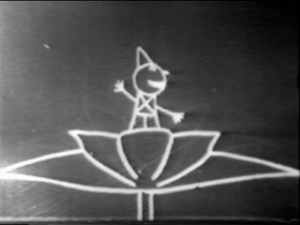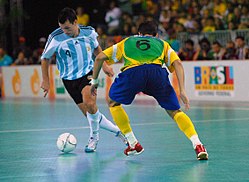In the world of professional audio, a mixing console, whether analog or
digital, or also called a soundboard / mixing desk (soundboard) is a
functioning electronic equipment blends (more popular with the term
"mixing"), setting paths (routing) and change level, as well as
dynamic harmonization of the audio signal. Signal - a signal that has been
modified and arranged later confirmed by the final amplifier or power
amplifier.
Audio mixers are widely used in various purposes, including recording studios, public call system (public address) systems, sound reinforcement, broadcasting both radio and television, post production and film making. An example of a simple application, a musical performance, for example, is extremely inefficient if we use each amplifier to strengthen every part of both singers and vocal musical instrument played by the accompanying band.
Here audio mixer will be an important part as a point gatherers from each microphone is installed, set the size of the sound level so that the sound level balance of both vocal and music will be reached before amplified by an amplifier.
Mixer is one of the most popular after the microphone. We know him better as the mixer, maybe most of us call it that because its function is to mix all the votes cast, then download seimbangkannya, making salura two-channel (stereo if LR, and one that mono), and then send it to the cross-over of new active fed to the power amplifier and finally to the speakers.
Mixing console received various sources of noise. Can of microphone, instrument, CD player, tape deck, or DAT. From here it is easy to do input and output level settings ranging from very soft to hard. If we suppose that an audio system iu suppose as human body, snake cable can we suppose that the nervous system, and the mixing console as the heart.
If there is a problem with it, it means the system is currently in big trouble. One of the most important requirement is a good mixing console input has a good gain, eq settings are also good. So will thus do more perfect setting and optimal for each microphone input, or whatever the sound source. There are many typical settings contained in a mixing console.
STRUCTURE OF AUDIO MIXER
Audio mixing consul Yamaha 2403 audio mixing console on live performance applications
Line inputs (input) is usually divided into several sections:
§ Input Jacks / amplifier front of the microphone (Microphone preamps)
§ Basic input controls
§ Channel EQ (High, Mid high, Mid and low)
§ Routing Section including Direct Outs, Aux-sends, Panning control and addressing subgroups
§ Input faders
§ subgroup faders
§ Output controls including Master level controls, EQ and / or Matrix routing
In consul-made yamaha mixer next few sections are given color codes to facilitate rapid identification by the operator.
Depending on the type mixernya, whether it's mono or stereo input has a line input with its own settings on each input. On most mixers, each channel has a XLR input type, RCA, or Jack input size of 1/4 inch.
Basic input controls
Below each input, there are usually several rotary controller (knobs, pots). The first is usually a gain setting or called trim. Input will set the signal from external equipment and controls, and it will adjust the amount of gain or attenuation of the signal necessary for adequate signal level to the next process. In this step, where most of the noise and interference will have a big impact, which usually have a microphone gain of approximately +50 dB, the gain of this magnitude could be impaired.
Balanced inputs and connectors, such as XLR type, Tip-Ring-Sleeve (TRS) jacks 1/4 inch, this will reduce the interference problem. Then be many entry points after level buffer / gain, whereby if any send or return from outside the processor will only affect the canal. input point (INSER points) are typically used to manage the effects of signal amplitude, such as limiting noise (noise gate), pelebar (expander) and Compression (compressor).
Auxiliary send routing
The Auxiliary send a signal that directs separate entrance to an auxiliary lane that can be used with external equipment. . Auxiliary sends, whether it is pre-fader or post-fader, where the level of a pre-fade send is set by the Auxiliary send control, whereas post-fade sends depend on the position fadernya channel. . Auxiliary sends can also to send signals to external processors such as reverb, which can then be fed back to enter through another channel or incorporated into an existing auxiliary returns on the mixer. Pre-fade auxiliary sends can be used to provide a monitor mix to musicians onstage, where the monitor mix is independent from the main mixing line.


Mixing boards used for live performances.
Channel EQ
Further channel setting is channel EQ. These settings adjust equalization tones low frequency tone (bass), middle tone (midrange) and high tones (treble). In most of the consul mixing width (24 channels or more) usually have sweep equalization in one or more frequency bands was called parametric equalizer. Mixer with a smaller size to have some or no at all this equalizer. Equalizer also set the frequency level set Siara cliping not happen that would interfere with the sound quality of the resulting channel. some mixer still have a common equalizer controls the output level.
Subgroup and mix routing
Each channel on the mixer has an audio taper-shaped rotary potentiometer or potensio meter slider to control the volume level of each channel to make it easier. The number of inputs to determine how well the existing audio faders. Then from each channel that is incorporated into the track playing "mix", or still be subdivided into several submix. The complexity of this arrangement depends on what applications will be used mixer. And also, the mixer is provided "insert point" for each bus or also on the overall mix.
Audio mixers are widely used in various purposes, including recording studios, public call system (public address) systems, sound reinforcement, broadcasting both radio and television, post production and film making. An example of a simple application, a musical performance, for example, is extremely inefficient if we use each amplifier to strengthen every part of both singers and vocal musical instrument played by the accompanying band.
Here audio mixer will be an important part as a point gatherers from each microphone is installed, set the size of the sound level so that the sound level balance of both vocal and music will be reached before amplified by an amplifier.
Mixer is one of the most popular after the microphone. We know him better as the mixer, maybe most of us call it that because its function is to mix all the votes cast, then download seimbangkannya, making salura two-channel (stereo if LR, and one that mono), and then send it to the cross-over of new active fed to the power amplifier and finally to the speakers.
Mixing console received various sources of noise. Can of microphone, instrument, CD player, tape deck, or DAT. From here it is easy to do input and output level settings ranging from very soft to hard. If we suppose that an audio system iu suppose as human body, snake cable can we suppose that the nervous system, and the mixing console as the heart.
If there is a problem with it, it means the system is currently in big trouble. One of the most important requirement is a good mixing console input has a good gain, eq settings are also good. So will thus do more perfect setting and optimal for each microphone input, or whatever the sound source. There are many typical settings contained in a mixing console.
STRUCTURE OF AUDIO MIXER
Audio mixing consul Yamaha 2403 audio mixing console on live performance applications
Line inputs (input) is usually divided into several sections:
§ Input Jacks / amplifier front of the microphone (Microphone preamps)
§ Basic input controls
§ Channel EQ (High, Mid high, Mid and low)
§ Routing Section including Direct Outs, Aux-sends, Panning control and addressing subgroups
§ Input faders
§ subgroup faders
§ Output controls including Master level controls, EQ and / or Matrix routing
In consul-made yamaha mixer next few sections are given color codes to facilitate rapid identification by the operator.
Depending on the type mixernya, whether it's mono or stereo input has a line input with its own settings on each input. On most mixers, each channel has a XLR input type, RCA, or Jack input size of 1/4 inch.
Basic input controls
Below each input, there are usually several rotary controller (knobs, pots). The first is usually a gain setting or called trim. Input will set the signal from external equipment and controls, and it will adjust the amount of gain or attenuation of the signal necessary for adequate signal level to the next process. In this step, where most of the noise and interference will have a big impact, which usually have a microphone gain of approximately +50 dB, the gain of this magnitude could be impaired.
Balanced inputs and connectors, such as XLR type, Tip-Ring-Sleeve (TRS) jacks 1/4 inch, this will reduce the interference problem. Then be many entry points after level buffer / gain, whereby if any send or return from outside the processor will only affect the canal. input point (INSER points) are typically used to manage the effects of signal amplitude, such as limiting noise (noise gate), pelebar (expander) and Compression (compressor).
Auxiliary send routing
The Auxiliary send a signal that directs separate entrance to an auxiliary lane that can be used with external equipment. . Auxiliary sends, whether it is pre-fader or post-fader, where the level of a pre-fade send is set by the Auxiliary send control, whereas post-fade sends depend on the position fadernya channel. . Auxiliary sends can also to send signals to external processors such as reverb, which can then be fed back to enter through another channel or incorporated into an existing auxiliary returns on the mixer. Pre-fade auxiliary sends can be used to provide a monitor mix to musicians onstage, where the monitor mix is independent from the main mixing line.


Mixing boards used for live performances.
Channel EQ
Further channel setting is channel EQ. These settings adjust equalization tones low frequency tone (bass), middle tone (midrange) and high tones (treble). In most of the consul mixing width (24 channels or more) usually have sweep equalization in one or more frequency bands was called parametric equalizer. Mixer with a smaller size to have some or no at all this equalizer. Equalizer also set the frequency level set Siara cliping not happen that would interfere with the sound quality of the resulting channel. some mixer still have a common equalizer controls the output level.
Subgroup and mix routing
Each channel on the mixer has an audio taper-shaped rotary potentiometer or potensio meter slider to control the volume level of each channel to make it easier. The number of inputs to determine how well the existing audio faders. Then from each channel that is incorporated into the track playing "mix", or still be subdivided into several submix. The complexity of this arrangement depends on what applications will be used mixer. And also, the mixer is provided "insert point" for each bus or also on the overall mix.

















